Tạp chí Newsweek (Mỹ) vừa liệt kê danh sách 100 địa điểm nổi tiếng của thế giới có nguy cơ biến mất hoàn toàn do tình trạng ấm lên của trái đất và những thay đổi ghê gớm về địa lý, trong đó châu Á "góp mặt" khá nhiều. 











 One of the most diverse reef ecosystems in the world is home to whale sharks, rays, and manatees, as well as sturgeon, conch and spiny lobsters.
One of the most diverse reef ecosystems in the world is home to whale sharks, rays, and manatees, as well as sturgeon, conch and spiny lobsters.

 Tropical rainforests like the Congo Basin produce 40 percent of the world's oxygen and serve as a vital source of food, medicine and minerals
Tropical rainforests like the Congo Basin produce 40 percent of the world's oxygen and serve as a vital source of food, medicine and minerals
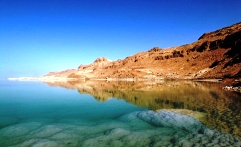


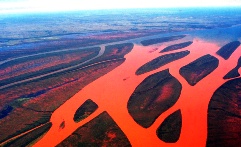
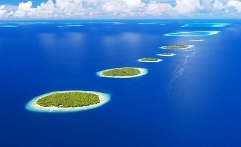






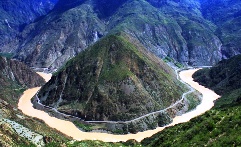
 Herschel Island, Canada, home to ancient Inuit sites and a historic whaling town at the edge of the Yukon that are being lost to the rising sea and melting permafrost in this fastest-warming part of the world.
Herschel Island, Canada, home to ancient Inuit sites and a historic whaling town at the edge of the Yukon that are being lost to the rising sea and melting permafrost in this fastest-warming part of the world.  Scott’s Hut, Antarctica, a time capsule of early 20th-century exploration. Ironically, it is being engulfed by vastly increased snowfall thought to be a result of changes in the weather—changes the station was built to monitor.
Scott’s Hut, Antarctica, a time capsule of early 20th-century exploration. Ironically, it is being engulfed by vastly increased snowfall thought to be a result of changes in the weather—changes the station was built to monitor.  Chinguetti Mosque, Mauritania, located in one of Islam’s seven holy cities and one of many sites in West Africa endangered by the encroaching desert.
Chinguetti Mosque, Mauritania, located in one of Islam’s seven holy cities and one of many sites in West Africa endangered by the encroaching desert.  Sonargaon-Panam City, Bangladesh, a former medieval trading hub and crossroads of culture, whose long-neglected and deteriorating architecture is increasingly threatened by flooding in this low-lying country, one of the most vulnerable to the impacts of global warming.
Sonargaon-Panam City, Bangladesh, a former medieval trading hub and crossroads of culture, whose long-neglected and deteriorating architecture is increasingly threatened by flooding in this low-lying country, one of the most vulnerable to the impacts of global warming.  Leh Old Town, Ladakh, India, a rare intact medieval city in the Himalayan region, now trying to balance development and modernization with sustainability as its traditional architecture faces changing weather patterns, including heavy rains, that it was not built to withstand.
Leh Old Town, Ladakh, India, a rare intact medieval city in the Himalayan region, now trying to balance development and modernization with sustainability as its traditional architecture faces changing weather patterns, including heavy rains, that it was not built to withstand.  New Orleans, Louisiana, United States, whose historic neighborhoods, already pummeled by Hurricane Katrina, are now struggling to restore homes while also preparing for future challenges posed by rising sea levels and the likelihood of stronger storms.
New Orleans, Louisiana, United States, whose historic neighborhoods, already pummeled by Hurricane Katrina, are now struggling to restore homes while also preparing for future challenges posed by rising sea levels and the likelihood of stronger storms.


Bang Gujarat, nơi sản xuất sợi vải bông nổi tiếng của Ấn Độ. Gujarat là bang chiếm 20% tổng sản lượng công nghiệp của toàn quốc và là bang công nghiệp hóa nhất Ấn Độ. Giữa năm 2005 và 2006, mưa lớn kéo dài đã gây ngập lụt nghiêm trọng khu vực này, cướp đi sinh mạng của hàng nghìn người. Nhiều dự đoán cho rằng thay đổi khí hậu sẽ khiến bang viễn tây này ngày càng phải gánh chịu nhiều thêm những trận lụt và bão bất ngờ.

Maldives, được mệnh danh là một thiên đường giữa Ấn Độ Dương, là đất nước có tới 1.200 hòn đảo. Nhưng Maldives là một trong những quốc gia thấp nhất thế giới so với mực nước biển và hiện vị trí cao nhất của quốc đảo này chỉ còn cách mặt nước biển khoảng 2,5m. Nếu mực nước biển tiếp tục tăng do thay đổi khí hậu toàn cầu, thiên đường xinh đẹp này có thể biến mất dưới đáy biển.

Bangkok, thủ đô của Thái Lan, nằm ở khu vực châu thổ Chao Phraya. Thành phố này luôn bị lũ lụt đe dọa trong mùa mưa, cùng với hậu quả của tốc độ đô thị hóa chóng mặt và tình trạng khai thác vô tội vạ nguồn nước ngầm. Dự đoán rằng phần lớn diện tích Bangkok sẽ chìm dưới nước biển vào cuối thế kỷ này.

Cherrapunji (Ấn Độ), 1.290m trên mực nước biển, nhận được lượng mưa hàng năm lớn nhất thế giới. Nhưng 98% lượng mưa trút xuống đây là từ tháng 3 đến tháng 10 mỗi năm, và 4 tháng còn lại thời tiết sẽ ngày càng khô. Không có hồ chứa nước dự trữ, và với tốc độ thay đổi khí hậy toàn cầu, ô nhiễm môi trường, nạn phá rừng và đất bị xói mòn như hiện nay, người dân không thể có đủ nước để sống trong những tháng mùa khô.

Đảo Komodo ở Indonesia nổi tiếng có bãi biển sạch và nguyên sơ, là thiên đường với các thợ lặn. Mực nước biển tăng đã đe dọa sự tồn tại của rừng đước ven biển và các bãi biển. Trong khi đó, thay đổi về nhiệt độ và độ axit hóa của nước biển có thể tiêu diệt hoàn toàn rặng san hô quanh khu vực này.

Có khoảng 1.200 con sếu đầu đỏ sống ở khu vực đầm lầy Kushiro ở Hokkaido (Nhật Bản), thiên đường của loài chim quý hiếm này kết đôi và sinh sản. Nhưng sự xâm nhập quy mô lớn của con người và mực nước biển tăng đã khiến đầm lầy Kushiro đang dần biến mất.

Sông Indus (Sông Ấn) dài hơn 3.000km, bắt nguồn từ Tây Nam Tây Tạng và chảy theo hướng Tây Bắc qua dãy núi Himalaya, vào khu vực Kashmir đang bị tranh chấp và uốn khúc qua những vùng lãnh thổ do Ấn Độ và Pakistan kiểm soát. Nó cung cấp phù sa nuôi dưỡng các cánh rừng, những ngôi làng dọc hai bên bờ và trở thành nguồn nước tưới quan trọng nhất. Các sông băng ngày càng bé lại và những thay đổi bất thường của lượng mưa có thể làm tình trạng thiếu nước cục bộ thêm nghiêm trọng.

Đảo Bernoe của Indonesia là hòn đảo lớn thứ 3 trên thế giới. Khoảng 50% diện tích đảo này được che phủ bởi rừng nguyên sinh, với rất nhiều loài động vật quý hiếm. Nhưng diện tích rừng ngày càng bị co hẹp do tình trạng phá rừng lấy đất trồng cọ, làm đường cộng với thay đổi về khí hậu dẫn đến sự biến mất dần những thảm thực vật quý.

Đỉnh Qomolangma hay chúng ta quen gọi là Đỉnh Everest, là ngọn núi cao nhất thế giới so với mực nước biển nằm trong dãy Himalaya. Các nhà khoa học cho rằng khoảng 2/3 lượng băng ở đây đang tan chảy và tình trạng này có thể dẫn đến sự hình thành nhanh chóng các hồ nước đá, gây ra nhiều thảm họa thiên nhiên trong đó có lở đất và lụt lội.

Sa mạc Rub' al Khali (còn gọi là Vùng Trống) bao phủ diện tích 650.000 km2 nằm phần lớn ở đông nam Arập Xêút và phần còn lại nằm ở Yemen, Oman, Các tiểu vương quốc Arập thống nhất. Đây là một trong những sa mạc khắc nghiệt nhất thế giới, nhiệt độ ban ngày lên đến 55°C và nhiệt độ có xu hướng ngày càng tăng, biến đây là vùng đất không hề phù hợp với sự sống.

Mergui Archipelago ở khu vực phía nam Myanmar, gồm 800 hòn đảo với những cảnh đẹp đặc biệt và động thực vật phong phú. Ngư dân ở đây sống lênh đênh trên thuyền vào mùa khô và sống trên đất liền vào mùa mưa.Tuy nhiên, thay đổi khí hậu toàn cầu và mực nước biển tăng có thể phá hoại hệ sinh thái san hô quanh các đảo và cả kế mưu sinh của người dân.

Biển Sulu-Sulawesi nằm ở trung tâm đa dạng sinh học biển nhiệt đới, nơi có hệ sinh thái san hô phong phú nhất thế giới với 450 loại san hô, so với 50 loại ở vùng biển Cribbean và xấp xỉ 200 ở Tây Ấn Độ Dương. Bao quanh là 3 quốc gia đông dân gồm Philippines, Indonesia và Malaysia, vùng biển này là nguồn sinh sống của 33 triệu người, nhưng nguồn tài nguyên biển đang bị tác động nặng nề của tình trạng dân sống tăng nhanh và khai thác quá mức.
The 2008 World Monuments Watch List of 100 Most Endangered Sites:
Sites Threatened by Global Climate Change:
The 2008 Watch List includes a number of sites threatened by global warming.
The 2008 Watch List includes a number of sites threatened by global warming.
Belize Barrier Reef
 One of the most diverse reef ecosystems in the world is home to whale sharks, rays, and manatees, as well as sturgeon, conch and spiny lobsters.
One of the most diverse reef ecosystems in the world is home to whale sharks, rays, and manatees, as well as sturgeon, conch and spiny lobsters.The Threat: Like the Great Barrier Reef in Australia, the Belize Barrier Reef leads a tenuous existence. A section of the nearly 700-mile-long Mesoamerican Reef that reaches from Mexico to Honduras, the Belize reef suffered a severe bleaching in 1998, with a loss of 50 percent of its coral in many areas, including much of its distinctive staghorn coral. Since the bleaching, its decline has continued, due to global warming of the world's seas, agricultural pollution, development, and increasing tourism, which has given rise to more coastal development and an invasion of cruise ships.

Roads cut by loggers and miners have also enabled poachers and bushmeat hunters to prey on endangered animals like bonobos (pictured), forest elephants, and okapis.
Photo: Courtesy © Frans Lanting/Corbis
Photo: Courtesy © Frans Lanting/Corbis
The Congo Basin
 Tropical rainforests like the Congo Basin produce 40 percent of the world's oxygen and serve as a vital source of food, medicine and minerals
Tropical rainforests like the Congo Basin produce 40 percent of the world's oxygen and serve as a vital source of food, medicine and mineralsThe Threat: At more than 1.3 million square miles, the Congo Basin has the world's second-largest rainforest, after the Amazon's. According to the UN up to two-thirds of the forest and its unique plants and wildlife could be lost by 2040 unless more effective measures are taken to protect it. Extending across six nations, ten million acres of forest is degraded each year due to mining, illegal logging, farming, ranching, and guerilla warfare. Roads cut by loggers and miners have also enabled poachers and bushmeat hunters to prey on endangered animals like mountain gorillas, forest elephants, bonobos, and okapis. As the forest shrinks, less carbon dioxide is absorbed, and rain decreases, adding to climate change.

The Dead Sea is the lowest spot on earth (1,312 feet below sea level), has 10 times more saline than seawater (so humans float like corks), and is believed to contain therapeutic minerals.
Photo: Courtesy LiorDrZ?/Getty
Photo: Courtesy LiorDrZ?/Getty
The Dead Sea
It's the lowest spot on earth (1,312 feet below sea level), has 10 times more saline than seawater (so humans float like corks), and is believed to contain therapeutic minerals.

The Threat: In the last four decades, the Dead Sea has shrunk by a third and sunk 80 feet—13 inches per year!—stranding formerly seaside resorts and restaurants nearly a mile from shore. The Jordan River is the lake's sole source, and as surrounding countries increasingly tap its waters, little reaches the Dead Sea, which could disappear within 50 years. Further pressure is put on the sea by the cosmetic companies and potash producers who drain it for minerals. One proposed solution is the controversial Red-Dead Canal, channeling water 112 miles from the Red Sea, but its environmental impact could be negative (some worry that it would increase seismic activity in the region).

At least 20 species in the Everglades are endangered including panthers, turtles, manatees, and great white egrets (shown here).
Photo: Courtesy Rasmus Bøgeskov Larsenøg/Flickr
Photo: Courtesy Rasmus Bøgeskov Larsenøg/Flickr
 The Everglades
The Everglades
This 2.5 million–acre wetland encompasses cypress swamps, mangroves, sawgrass and pine savannahs. It's the only place in the world where crocodiles and alligators share territory.
The Threat: A host of dangers are putting this fragile wetland at risk: pollution from farms, invasive species, and encroaching development, not to mention the fact that 60 percent of the region's water is being diverted to nearby cities and farms. As a result, The Everglades is now half the size it was in 1900. Worse, this is the sole habitat of the Florida panther, and there are less than 100 of the creatures left in the wild. These big cats may be completely lost within the next 40 years as their habitat disappears (they're not alone, either—at least 20 species in the Everglades are endangered, including turtles, manatees, and wading birds).

Erosion is also a concern inMadagascar. The Betsiboka River, above, is red thanks to the large quantity of sediment it carries to the sea.
Photo: Courtesy oledoe/Flickr
Photo: Courtesy oledoe/Flickr
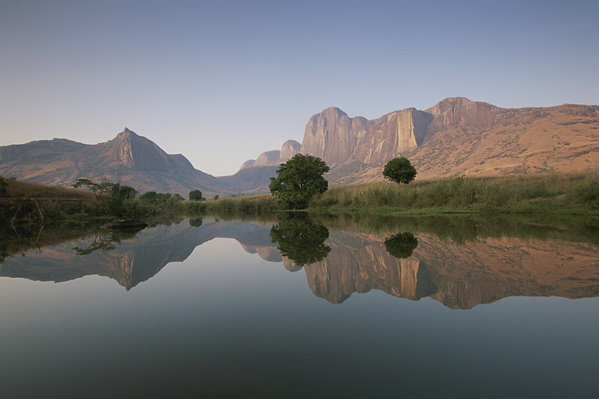 Madagascar
Madagascar
More than 80 percent of Madagascar's flora and fauna are found nowhere else on Earth, thanks to millions of years of isolation in the Indian Ocean off of Africa.
The Threat: If nothing is done to save the world's fourth-largest island, its forests will be gone in 35 years (once 120,000 square miles, they're now down to 20,000), and their unique inhabitants along with them. Forest ecosystems are being destroyed by logging, burning for subsistence farms, and poaching. The 20 species of lemurs for which Madagascar is renowned are in danger of disappearing. Though there are game reserves, they're not large (occupying only five percent of the island), nor are they contiguous, thus failing to provide corridors for the animals to travel through. Some of Madagascar's endemic species have never even been recorded, and will likely be lost before they can be studied.

Only 200 of the islands of the Maldives are inhabited, and none rise higher than eight feet above sea level. Few scientists hold out much hope for the country if global warming continues to melt the ice caps and raise sea levels. Shown here: Baa Atoll.
Photo: Courtesy Sakis Papadopoulos/Getty
Photo: Courtesy Sakis Papadopoulos/Getty
 The Maldives
The Maldives
The nation is rich in coral reefs and endangered fish—like the giant Napolean wrasse, leopard shark, and some 250 manta rays (most with wingspans of 10 feet).
The Threat: Few scientists hold out much hope for the Maldives—the world's lowest nation—if global warming continues to melt the ice caps and raise sea levels. Its 1,190 small islands and atolls (200 of which are inhabited) scattered across the Indian Ocean rise a mere eight feet above sea level. In 2008, the President of the Maldives announced the government would start buying land in other countries, including India, for future homes for citizens displaced by rising waters. In 2009, he held a cabinet meeting underwater to stress the islands' vulnerability.

In the Arctic, the polar bear is also endangered by the steady loss of sea ice, which has decreased 3 percent per decade since the 1970s.
Photo: Courtesy Ansgar Walk/Wikimedia Commons
Photo: Courtesy Ansgar Walk/Wikimedia Commons
 The Poles
The Poles
The natural phenomena here are unique and inspiring: towering icebergs, Aurora Borealis, and majestic animals (penguins, polar bears, whales).

The Threat: The Woods Hole Oceanographic Institute, the world's largest non-profit ocean research group, has predicted that 80 percent of the emperor penguin population of Antarctica will be lost, and the rest in danger of extinction, if global warming continues. In the Arctic, the polar bear is also endangered by the steady loss of sea ice (which has decreased 3 percent per decade since the 1970s). As sea ice disappears at the poles, so do entire ecosystems: the phytoplankton that grows under ice sheets feeds zooplankton and small crustaceans like krill, which are on the food chain for fish, seals, whales, polar bears and penguins. Studies predict that with continued warming, within 20-40 years, no ice will form in Antarctica.

The tiger's habitats have been reduced 95 percent, and though there are reserves across Asia, most are small and have no corridors between them for the normally far-roaming felines. It's estimated that a tiger a day is killed for use in Chinese traditional medicine.
Photo: Courtesy Bjoern Ognibeni/Flickr
Photo: Courtesy Bjoern Ognibeni/Flickr
 Rajasthan, Ranthambore
Rajasthan, Ranthambore
One of the best places in the world to see tigers.

The Threat: The world's population of wild tigers has fallen to as few as 3,200, more than half of which live in India. If extreme efforts are not undertaken, the big cat may be extinct within our lifetime—possibly in as soon as a dozen years. (Compare this number to the 100,000 tigers that lived in India in 1900 and you can see just how drastically things have changed in the past two centuries.) Their habitats have been reduced 93 percent, and though there are reserves across Asia, most are small and have no corridors between them for the normally far-roaming felines. It's estimated that a tiger a day is killed for use in Chinese traditional medicine.

Parrots and macaws feed off of the world's largest salt lick in the Tahuamanu rainforest.
Photo: Courtesy Frans Lemmens/Getty
Photo: Courtesy Frans Lemmens/Getty
 The Tahuamanú Rainforest
The Tahuamanú Rainforest
Parrots and macaws feed off of the world's largest salt lick. They share this pristine wonderland with endangered creatures like giant armadillos, ocelots, jaguars, and giant otters.

The Threat: This magnificent rain forest in Peru's Madre de Dios region holds some of the last old-growth stands of mahogany in South America. But illegal logging is depleting the rainforest—and the U.S. is responsible for buying 80 percent of the mahogany. A single tree can create as much as $1 million worth of furniture. Loggers build roads, allowing farmers and hunters to enter, further crowding the indigenous people and destroying the delicate ecosystem. In nearby areas, gold mining has released mercury into the air and water.

It's too early to know the exact impact of the creation of China's massive, $24 billion Three Gorges Dam, but many, including the Chinese government, have acknowledged that the Yangtze Basin region is in danger of losing its most distinctive marine and animal life.
Photo: Courtesy chenyingphoto/Flickr
Photo: Courtesy chenyingphoto/Flickr
 Herschel Island, Canada, home to ancient Inuit sites and a historic whaling town at the edge of the Yukon that are being lost to the rising sea and melting permafrost in this fastest-warming part of the world.
Herschel Island, Canada, home to ancient Inuit sites and a historic whaling town at the edge of the Yukon that are being lost to the rising sea and melting permafrost in this fastest-warming part of the world. Scott’s Hut, Antarctica, a time capsule of early 20th-century exploration. Ironically, it is being engulfed by vastly increased snowfall thought to be a result of changes in the weather—changes the station was built to monitor.
Scott’s Hut, Antarctica, a time capsule of early 20th-century exploration. Ironically, it is being engulfed by vastly increased snowfall thought to be a result of changes in the weather—changes the station was built to monitor. Chinguetti Mosque, Mauritania, located in one of Islam’s seven holy cities and one of many sites in West Africa endangered by the encroaching desert.
Chinguetti Mosque, Mauritania, located in one of Islam’s seven holy cities and one of many sites in West Africa endangered by the encroaching desert. Sonargaon-Panam City, Bangladesh, a former medieval trading hub and crossroads of culture, whose long-neglected and deteriorating architecture is increasingly threatened by flooding in this low-lying country, one of the most vulnerable to the impacts of global warming.
Sonargaon-Panam City, Bangladesh, a former medieval trading hub and crossroads of culture, whose long-neglected and deteriorating architecture is increasingly threatened by flooding in this low-lying country, one of the most vulnerable to the impacts of global warming. Leh Old Town, Ladakh, India, a rare intact medieval city in the Himalayan region, now trying to balance development and modernization with sustainability as its traditional architecture faces changing weather patterns, including heavy rains, that it was not built to withstand.
Leh Old Town, Ladakh, India, a rare intact medieval city in the Himalayan region, now trying to balance development and modernization with sustainability as its traditional architecture faces changing weather patterns, including heavy rains, that it was not built to withstand. New Orleans, Louisiana, United States, whose historic neighborhoods, already pummeled by Hurricane Katrina, are now struggling to restore homes while also preparing for future challenges posed by rising sea levels and the likelihood of stronger storms.
New Orleans, Louisiana, United States, whose historic neighborhoods, already pummeled by Hurricane Katrina, are now struggling to restore homes while also preparing for future challenges posed by rising sea levels and the likelihood of stronger storms. The Yangtze River Basin:Exotic creatures like giant pandas, dwarf blue sheep, Yangtze finless porpoises, and Siberian cranes call this region home—along with some 400 million people.
The Yangtze River Basin:Exotic creatures like giant pandas, dwarf blue sheep, Yangtze finless porpoises, and Siberian cranes call this region home—along with some 400 million people.

The Threat: It's too early to know the exact impact of the creation of China's massive, $24 billion Three Gorges Dam, but many, including the Chinese government, have acknowledged that the Yangtze Basin region is in danger of losing its most distinctive marine and animal life. Deforestation has occurred from clearing land for displaced farmers, and the reservoir has flooded villages, farms, factories, and mines, adding to the Yangtze River's existing pollution from shipping, industry, agriculture and raw sewage. Landslides have also happened, and seismologists wonder if the water pressure above two fault lines might result in a disastrous earthquake.
Sites Threatened by Conflict:Whether past, ongoing, or imminent, conflict has become one of the most severe threats to cultural heritage.
 Cultural Heritage Sites of Iraq, where ongoing conflict has led to catastrophic loss at the world’s oldest and most important cultural sites, and where the damage continues. Cultural Heritage Sites of Iraq, where ongoing conflict has led to catastrophic loss at the world’s oldest and most important cultural sites, and where the damage continues.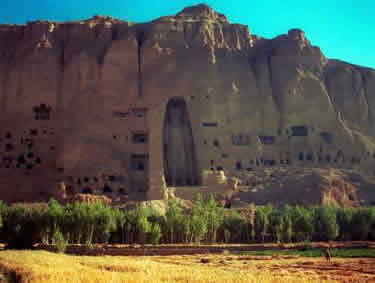 Bamiyan Buddhas, Afghanistan, tragic illustrations of the importance of cultural heritage and the consequences of its destruction. The leftover fragments and historic context remain endangered and their future is in question. Bamiyan Buddhas, Afghanistan, tragic illustrations of the importance of cultural heritage and the consequences of its destruction. The leftover fragments and historic context remain endangered and their future is in question. 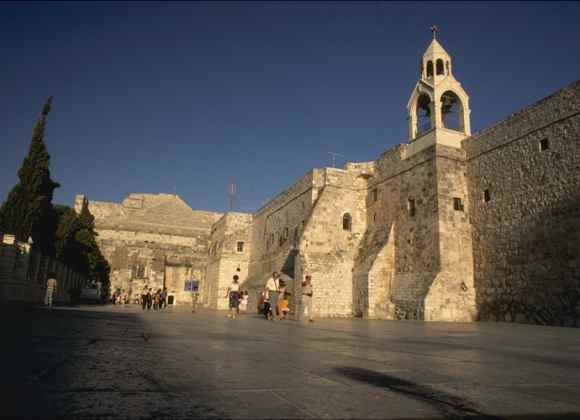 Church of the Holy Nativity, Bethlehem, Palestinian Territories. The site of one of Christianity’s oldest churches is now deteriorating as a result of modern political tensions. Church of the Holy Nativity, Bethlehem, Palestinian Territories. The site of one of Christianity’s oldest churches is now deteriorating as a result of modern political tensions. Famagusta Walled City, Cyprus, featured in Shakespeare’s “Othello,” now neglected as political deadlock over the island’s sovereignty continues. Famagusta Walled City, Cyprus, featured in Shakespeare’s “Othello,” now neglected as political deadlock over the island’s sovereignty continues. Sarajevo City Hall, Bosnia and Herzegovina, an architectural testament to the cultural diversity of the city, damaged by war. Sarajevo City Hall, Bosnia and Herzegovina, an architectural testament to the cultural diversity of the city, damaged by war. Srinigar Heritage Zone, India, where traditional structures built to survive earthquakes are suffering as a result of ongoing instability and conflict in the Kashmir region. Srinigar Heritage Zone, India, where traditional structures built to survive earthquakes are suffering as a result of ongoing instability and conflict in the Kashmir region. Freetown Historic Monuments, Sierra Leone. Once known as the “Athens of West Africa,” the city is emerging from protracted civil war and now seeking to protect and preserve the monuments that played a part in its history, including one of the most important sites related to slavery on the continent. Freetown Historic Monuments, Sierra Leone. Once known as the “Athens of West Africa,” the city is emerging from protracted civil war and now seeking to protect and preserve the monuments that played a part in its history, including one of the most important sites related to slavery on the continent.Sites Threatened by Economic and Development Pressures: Often historic sites suffer in the interest of short-term gains that result in long-term losses. New construction often means destruction of historic places. The 2008 Watch List includes a broad range of sites facing encroachment or outright destruction
|

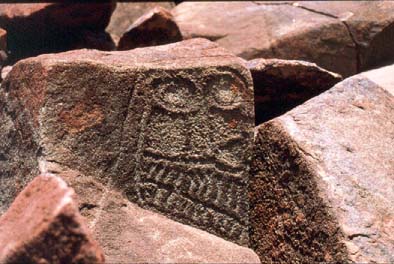


























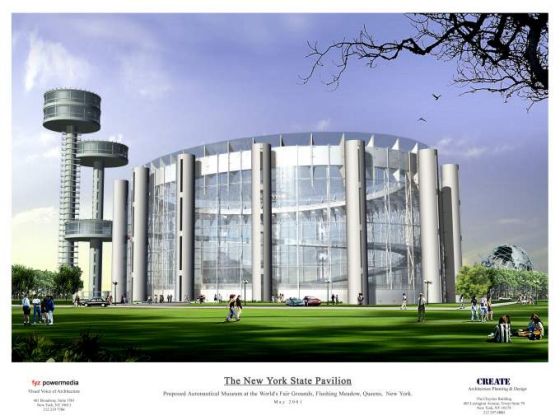




No comments:
Post a Comment